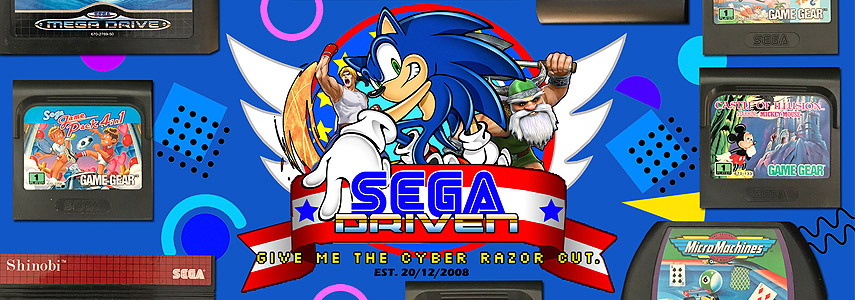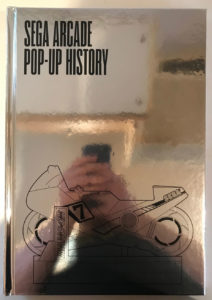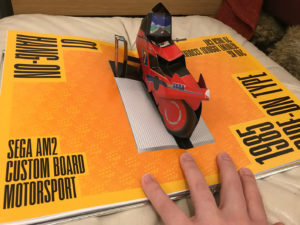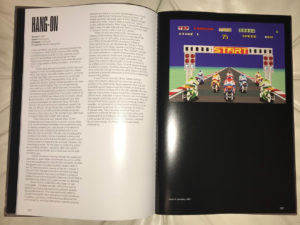SEGA Arcade Pop-Up History – Book Review
SEGA Arcade Pop-Up History is a wonderful idea in concept. What long-standing SEGA fan doesn’t want a book full of pop-up, cardboard models of some of SEGA’s most iconic, deluxe, arcade cabinets? That’s such a goofy and charming little concept that we instantly jumped on board as soon as this was announced on Kickstarter. But after pawing through the finished product, it often feels like the concept was far better than the end result.
There is no denying that the book’s 6 pop-up models aren’t all realised with a fantastic attention to detail. These intricate, beautiful, little miniatures work exactly as intended and really let you appreciate the wonderful construction of the original machines. They’re given ample space to breathe and the first time you get to see one unfold in all its glory is a wonderfully geeky moment of joy and silliness.
Unfortunately, it isn’t enough. Read-Only Memory have produced some absolutely wonderful gaming reads so far and have always given their productions the time and love they deserve before releasing them into the wild. Their Sensible Software 1986-1999 and SEGA Mega Drive/Genesis: Collected Works books feel like the definitive publications about their chosen subjects, but SEGA Arcade Pop-Up History is more of a gimmick than anything that could be regarded definitive.
Firstly, of the 6 arcade games featured, 5 of them are Yu Suzuki efforts, meaning the book feels more like a tribute to Suzuki-san instead of a wider look at SEGA’s arcade history. There just isn’t enough editorial content in here. Each game is given a single page of editorial that describes the game’s key features, what made it special and sprinkles in some key quotes from the game’s designer. That’s all you get for words outside of a 3 page Foreword at the start of the book.
Some games come with accompanying concept art of their arcade cabinets but others don’t, leaving more room for screenshots of the games which are presented through an ugly, faux-CRT filter that doesn’t do the wonderful pixel art any justice. There’s also a surprisingly large amount of dead space underneath all the screenshots and concept art, which is very often the house style with Read-Only Memory publications, but here it just makes the book feel even more barren. With so little content in here, you can’t help but feel all this empty page space could have been better utilised.
The real tell-tale sign that there isn’t a lot of bang for your buck in SEGA Arcade Pop-Up History is looking at how the book rests when you lay it flat. There aren’t enough pages in the book for the width of the spine, which means the whole thing rests at an angle. This was likely done to give the pop-up models enough space so they wouldn’t get damaged or crushed, but you can’t help but look at it and feel like something is missing from the book.
What also seems like an odd choice is the decision to place the pop-up models in the back half of the book and not the front. This once again takes the emphasis off the models and onto the editorial content, which seems redundant considering how little of it there is. In hindsight, it might have been more beneficial to move the editorials to the back and expand the focus of the book. The writer, Keith Stuart could have used the editorial content to showcase more than just the SEGA games with deluxe arcade cabinets. He could have discussed the lineage of each game with more detail on the franchises they came from or where those franchises went after the release of the featured game. He could have taken a deeper dive into SEGA’s arcade back catalogue and shed some light on some titles that were never ported to home consoles. There is simply so much more this book could have offered than simply a few paragraphs of serviceable-yet-unexciting writing and a pop-up model.
But what feels the most damning is that backing the Kickstarter for the exclusive silver-foil cover just wasn’t worth it. The version of the book being sold to the public via Read-Only Memory’s online store features a much more striking red cover that actually matches the use of the Hang-On deluxe cabinet on the cover. We were also promised a deep-embossed cover that never came to fruition because it didn’t test well and the effect was causing the paper to crack, but we are only learning about this post publication instead of during the Kickstarter campaign.
You can’t help but feel like Read-Only Memory bit off more than they could chew by choosing to publish both SEGA Arcade Pop-Up History and SEGA Dreamcast: Collected Works at the same time. SEGA Arcade Pop-Up History is the real casualty of this decision, and while its pop-up models are certainly well made and striking to look at it, the amount of editorial content amounts to nothing more than a glorified fanzine that the publisher is asking you to pay £35 for.
Written by Lewis “Sonic Yoda” Clark 25/02/2020
SEGA Arcade Pop-Up History is available now and can be purchased in hardback from Read-Only Memory’s online store.












